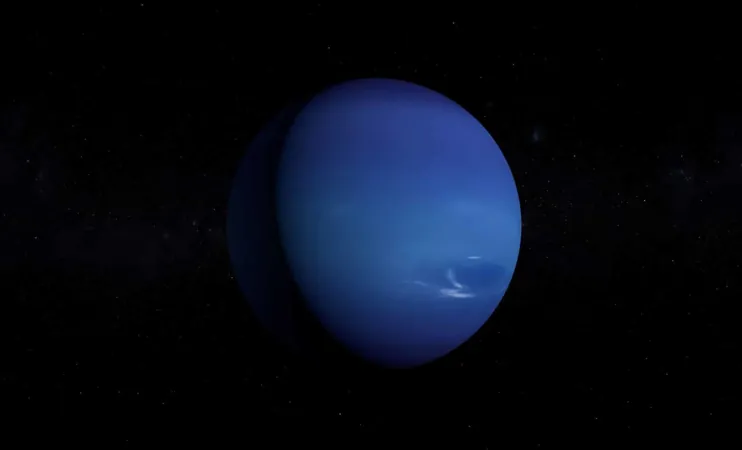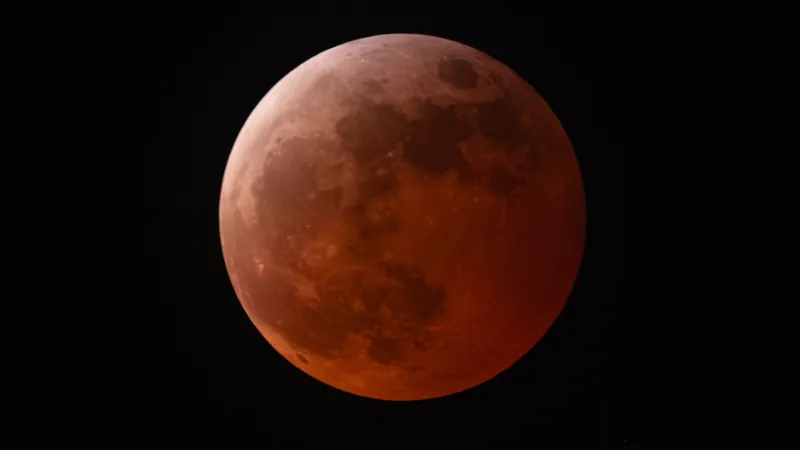
Astronomers Discover Mysterious Object in Outer Solar System: Meet 2020 VN40, Neptune's Dance Partner!
2025-07-20
Author: Jacob
A Groundbreaking Discovery at the Edge of Our Solar System
In a stunning revelation, astronomers have uncovered a peculiar celestial body lurking at the farthest reaches of our solar system—a captivating space rock named 2020 VN40 that is dancing in perfect harmony with Neptune. This amazing discovery, part of a larger category known as trans-Neptunian objects (TNOs), has shattered our previous understanding of the dynamics in these distant cosmic territories.
The Fascinating Orbital Rhythm of 2020 VN40
2020 VN40 possesses one of the most extraordinary orbits ever recorded. It circles the Sun once for every ten orbits of Neptune, resulting in a staggering orbital period of about 1,648 years—a timeline that would take 19,776 months to complete! For context, one year on Neptune lasts an incredible 164.8 Earth years.
Researchers believe this unique orbital pattern emerged when 2020 VN40 was temporarily ensnared by Neptune's gravitational pull. "This is a pivotal step in unraveling the mysteries of the outer solar system," stated Rosemary Pike, team lead from the Center for Astrophysics | Harvard & Smithsonian. This groundbreaking find is expected to unveil more about the evolutionary story of our solar system.
Unlocking Secrets: How 2020 VN40 Was Discovered
The orbital dance of 2020 VN40 was revealed through the Large inclination Distant Objects (LiDO) survey, which aims to delve into the remote reaches of our solar system. Utilizing the advanced Canada-France-Hawaii Telescope, along with support from the Gemini Observatory and Walter Baade Telescope, this ambitious survey is focused on locating celestial objects in highly inclined orbits, uncharted territories that hold many secrets.
According to Samantha Lawler, a member of the LiDO team from the University of Regina, "We’ve learned about the abundance of small bodies residing in these tilted orbits." The continuing survey continues to shed light on these enigmatic objects, redefining our understanding of solar system dynamics.
The Peculiar Behavior of 2020 VN40
What sets 2020 VN40 apart is its striking resonance with Neptune. Unlike most other celestial bodies that follow this orbital pattern, which typically reach their closest approach to the Sun when Neptune is farthest away (aphelion), 2020 VN40 does the opposite. It reaches its perihelion—the point of closest approach to the Sun—when Neptune is at its nearest, creating an unexpected sync between the two.
Orbiting an astonishing average of 140 times farther from the Sun than Earth, this TNO stands out not just for its distance but for its trajectory. Positioned far below the solar system's ecliptic plane, 2020 VN40 challenges the conventional movements of similar objects. As Ruth Murray-Clay, a scientist at the University of California Santa Cruz notes, "This new motion is like finding a hidden rhythm in a song we thought we knew."
The Search for More Mysteries
The revelation of 2020 VN40 has ignited a fervent interest in discovering more similar objects in the outer solar system. The newly operational Vera C. Rubin Observatory is expected to play a critical role in this ongoing quest, enhancing our understanding of these remote regions of space.
"This is only the beginning!" exclaimed Kathryn Volk, a researcher at the Planetary Science Institute. "We are opening a new window into our solar system’s past." As the pursuit for more TNOs intensifies, scientists remain hopeful that upcoming discoveries will continue to unveil the mysteries of our cosmic neighborhood.









 Brasil (PT)
Brasil (PT)
 Canada (EN)
Canada (EN)
 Chile (ES)
Chile (ES)
 Česko (CS)
Česko (CS)
 대한민국 (KO)
대한민국 (KO)
 España (ES)
España (ES)
 France (FR)
France (FR)
 Hong Kong (EN)
Hong Kong (EN)
 Italia (IT)
Italia (IT)
 日本 (JA)
日本 (JA)
 Magyarország (HU)
Magyarország (HU)
 Norge (NO)
Norge (NO)
 Polska (PL)
Polska (PL)
 Schweiz (DE)
Schweiz (DE)
 Singapore (EN)
Singapore (EN)
 Sverige (SV)
Sverige (SV)
 Suomi (FI)
Suomi (FI)
 Türkiye (TR)
Türkiye (TR)
 الإمارات العربية المتحدة (AR)
الإمارات العربية المتحدة (AR)